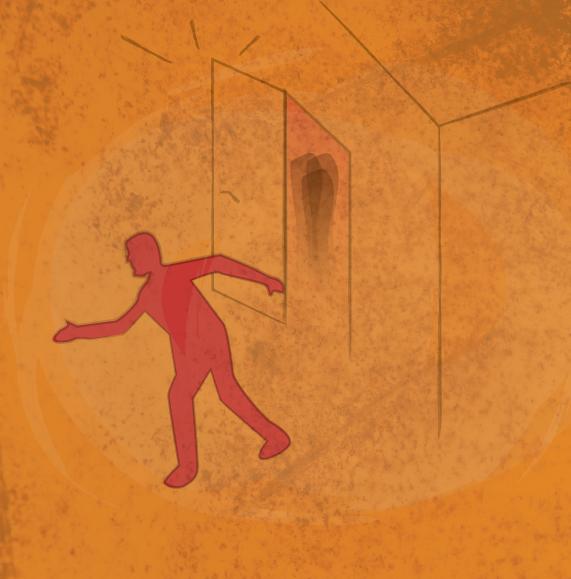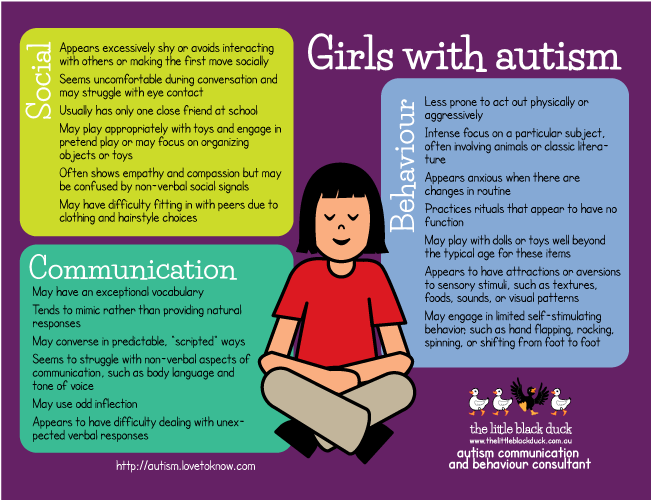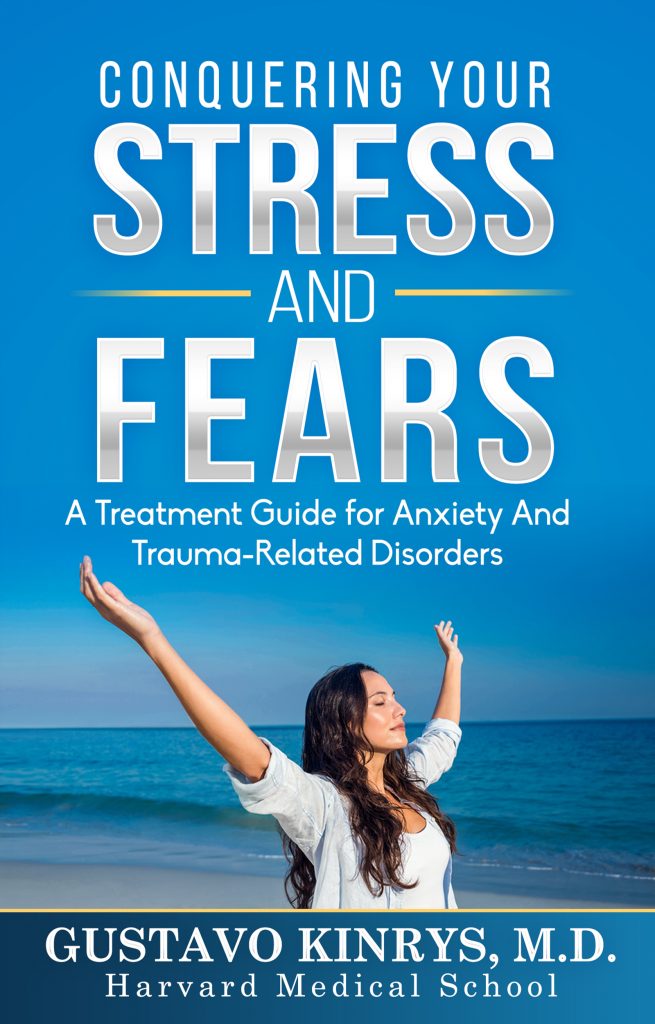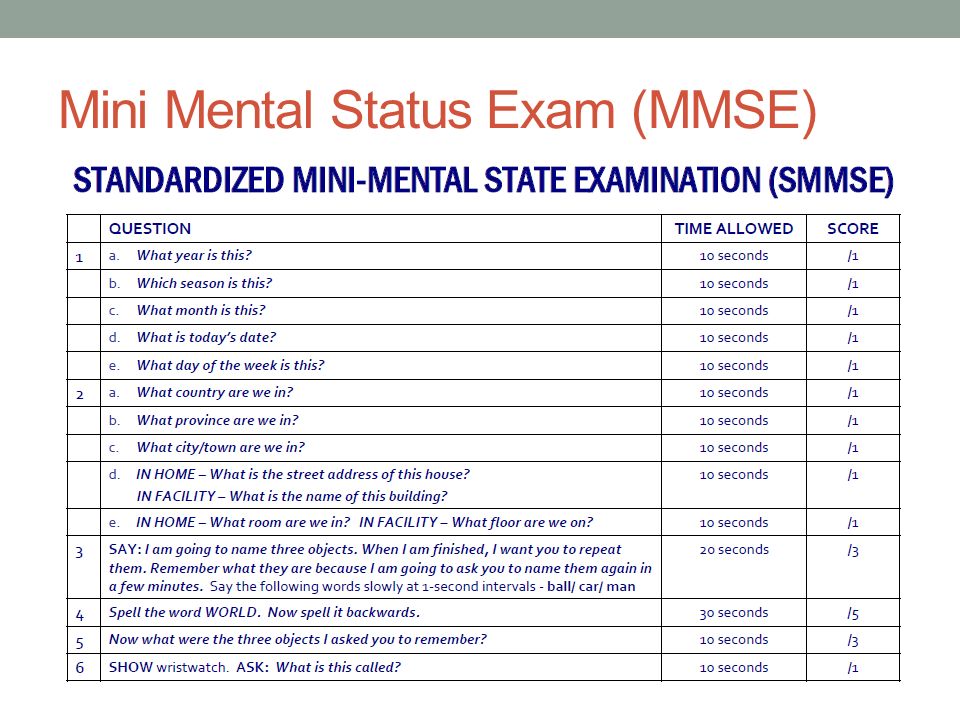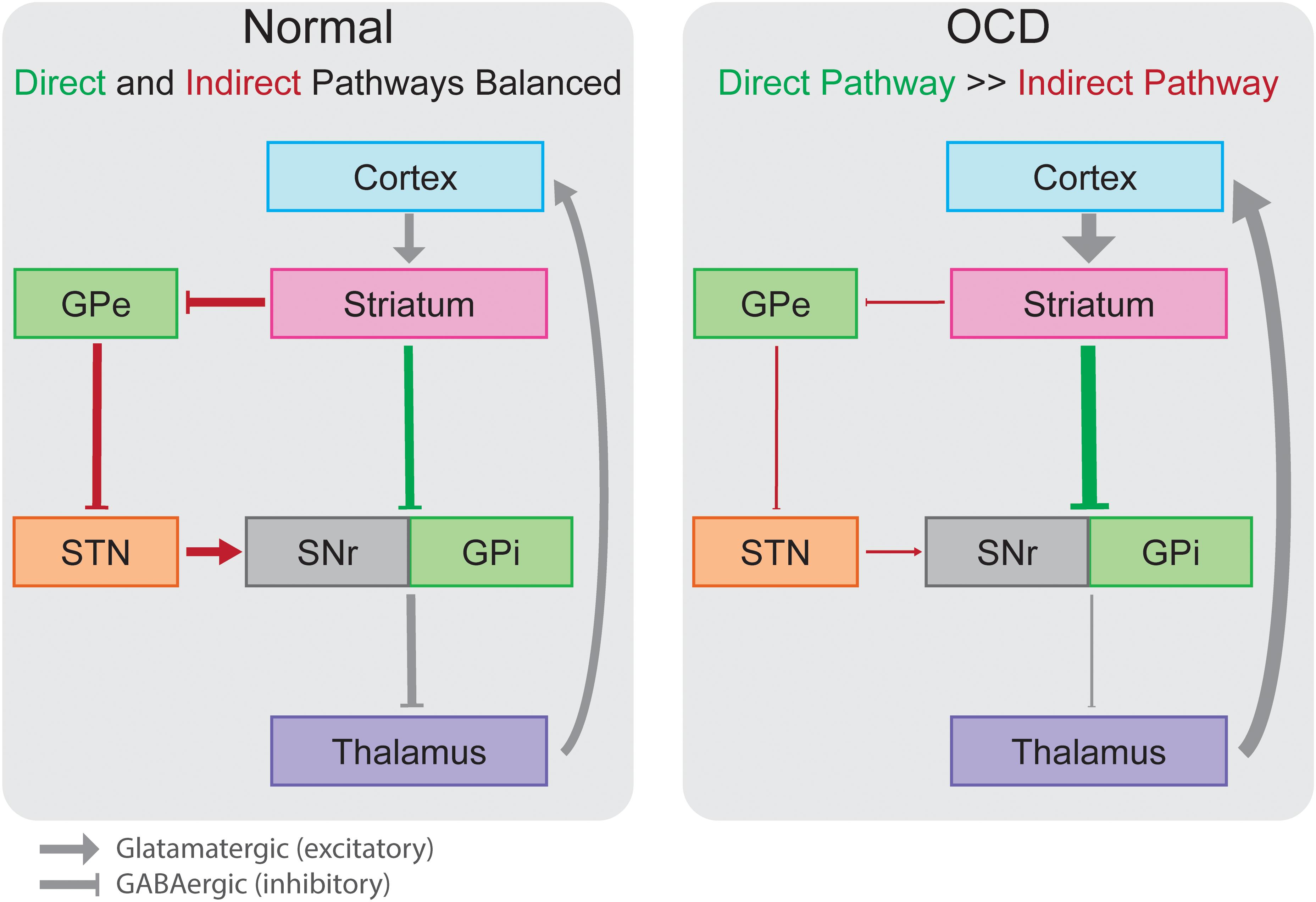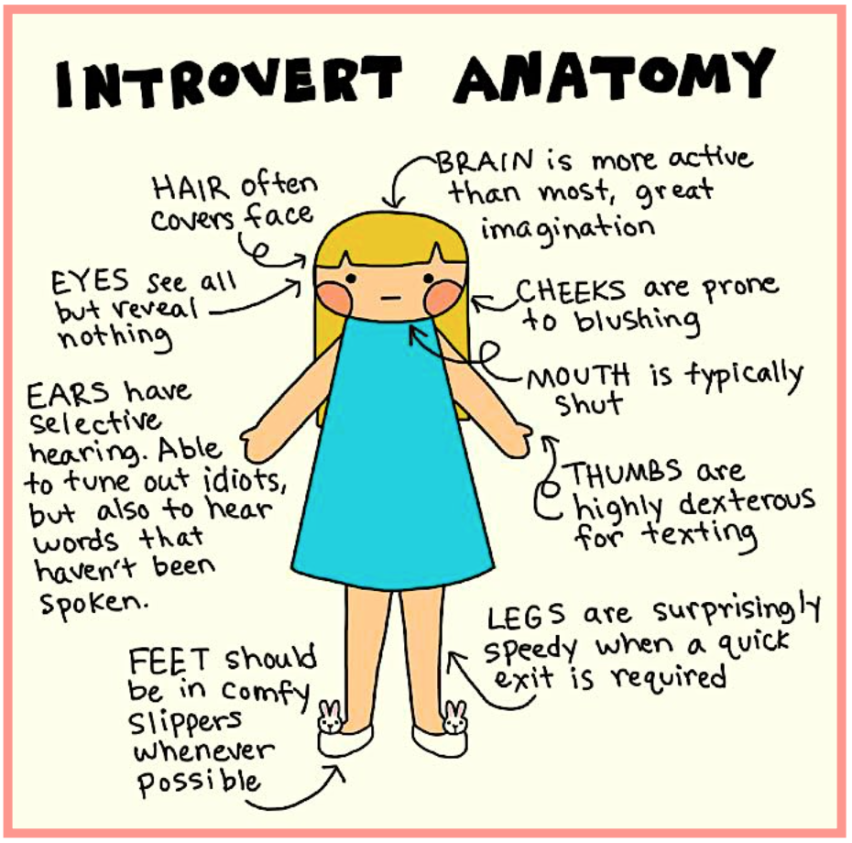How to destroy a narcissistic mother
Healing From A Narcissistic Mother
The narcissistic mother is a source of much pain and guilt for adult children of narcissism. Healing from a narcissistic mother and her manipulations and emotional neglect is a sensitive process. From childhood through to adulthood, she remains a constant shadow which abused sons and daughters struggle to escape.
Traits of a narcissistic mother
A narcissistic mother might exhibit some or all of the following behaviours:
- Snicker and laugh at your weaknesses: That all knowing laugh when you make a mistake communicates how amusing you are in comparison to the narcissistic mother, who wouldn never make the same error. Quite often, the mistake is not even a mistake, but a snicker at something you simply did a different way to how the narcissistic mother would do it. Not uncommon still is being laughed at even if you did something correctly, just to make you question yourself and think the narcissist knows something you don’t.
- Speak about you in the third person when you’re present: When you’re discussed with someone else while present, especially in a non-favourable way, it can make you feel both shamed and powerless. For example, “Lisa has been so lazy around the house. She hasn’t done any housework, she just watches Netflix all day.” When this is said to someone else in your presence, it shines the light on you without actually including you in the conversation. It creates an illusion of two people of ‘higher knowledge’ discussing you: the object of ‘concern’. Firstly, such a statement is subjective (Lisa might have felt a bit sick and watched Netflix for a few hours simply to unwind) and it forces you to either defend yourself or feel shame.
- Ask critical, rhetorical questions: For example, “Why did you arrange the plates like that?” or “Why are you wearing those pants for?” These questions have no real answer or purpose other than to shine a light on your supposed incompetence.
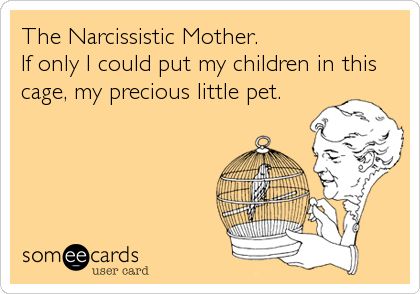
- Not allow you to set boundaries: A narcissistic mother might assume she knows what’s best for you – without consulting you first. She’ll order your drink without asking, make decisions involving you without consulting, open your mail and so on. This objectifies you and makes you feel like only she knows what’s best for you.
- Compare you to others: When the narcissistic mother points out that someone she knows can do what you can’t, or is better at something than you, she forces you onto a scale of worth. Real or not, it is shaming and can be difficult to ignore. A narcissistic mother can (subjectively) explain to her single daughter that every other woman her age is happily married and has children. Such subtle comparisons undermine and shame.
These traits are just a subset of the destructive ways a narcissistic mother causes emotional harm to her daughter or son. Therefore, untangling and healing from the narcissistic mother can positively impact a person’s life in unimaginable ways, allowing them to finally move on and live life to its fullest. But where to begin? The answer, as with all relationships, lies in childhood.
But where to begin? The answer, as with all relationships, lies in childhood.
An adult will never ‘mentally’ solve the problem. The narcissistic mother maintains her grip because she established it long before the child developed thinking capacity. That is, the dynamic between a child and the mother is forged deep inside the child’s subconscious. It is only through the inner child that the adult can move toward healing from the narcissistic mother and make lasting change.
The mother, narcissistic or not, is the figure which all of our relationships stem from. The attachment is rooted deep in our core, where it continues to influence us well into adulthood. What makes it so difficult for the adult to understand and detach from the narcissistic mother is that the attachment is not just to a person: they are worshipping an archetype in their mind. They are attached to an idea.
Good mother, bad mother, narcissistic mother
When a child begins to bond with the mother, they are highly sensitive and vulnerable.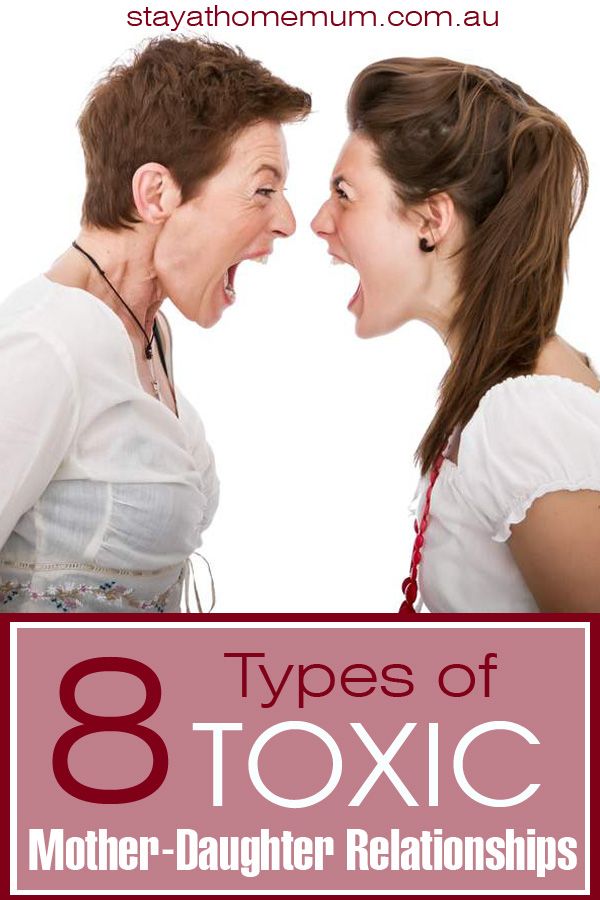 The mother is the child’s lifeline; their only way to survival and growth. The mother sustains the child completely, nourishing their fledgling body with milk, love and warmth. As a result, she takes on a godly role in the child’s life. The child senses her as a divine being, craving nothing else but her total acceptance. As long as abandonment equals death, the child watches with hyper-vigilance how the mother reacts to them. A child in the face of an angry mother is the equivalent of a person with an extreme fear of flying, wherein a severe storm forces the plane to drop a hundred feet in a second.
The mother is the child’s lifeline; their only way to survival and growth. The mother sustains the child completely, nourishing their fledgling body with milk, love and warmth. As a result, she takes on a godly role in the child’s life. The child senses her as a divine being, craving nothing else but her total acceptance. As long as abandonment equals death, the child watches with hyper-vigilance how the mother reacts to them. A child in the face of an angry mother is the equivalent of a person with an extreme fear of flying, wherein a severe storm forces the plane to drop a hundred feet in a second.
Furthermore, as the child develops their ego, they initially only have the capacity for black and white thinking. They don’t comprehend that a person can have stress in their life, have bad moods or be dealing with childhood issues. When faced with overwhelming emotions, the child’s black and white thinking paired with their extreme fear forces them to split the mother in two. When the mother mirrors them, caters to their needs and makes them feel safe, they project and identify in their mind with the good mother, who is divine and perfect.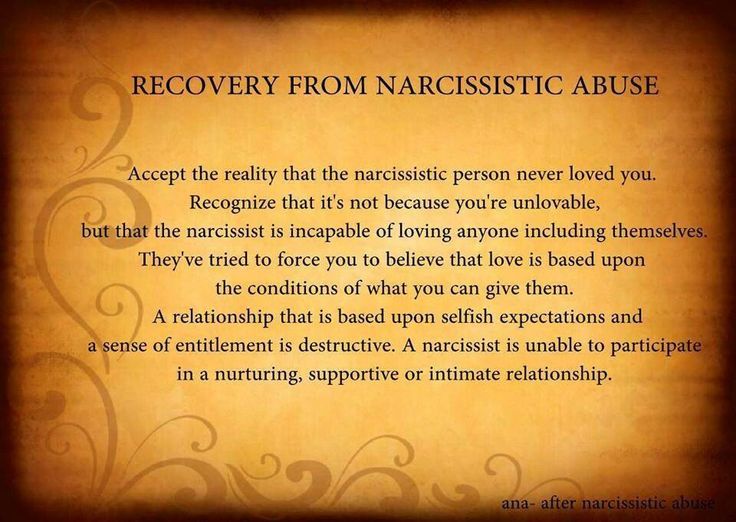 When the mother is angry, neglectful, or does not cater sufficiently to the child’s needs, the child identifies in their mind with the bad mother, who is tyrannical and wicked.
When the mother is angry, neglectful, or does not cater sufficiently to the child’s needs, the child identifies in their mind with the bad mother, who is tyrannical and wicked.
The child splits like this so they have somewhere to place the intense emotions which they cannot process. It is important for the child to hate the bad mother and focus their rage toward her. This helps them maintain the image of the good mother while escaping the terrifying fear of abandonment. It gives them a sense of control. The more abusive the mother is to the child, the more overwhelming the terror is, and the more the child splits to cope. They cling even tighter to the idea of the good mother to help assuage their fear and dread.
Reconciling the good and the bad
Ideally, the mother will sufficiently mirror the child, cater to their needs and offer them love and acceptance. When the mother inevitably lets the child down, she will remain calm as the child expresses their rage. By doing this, the child will bond with the good mother and eventually realise that the person whom they love (the good mother) and the person whom they hate (the bad mother) are the same person. The constructs of good and bad merge, and the child will begin to see a human being; not a construct in their mind. The child’s thinking establishes shades of grey. Mother is good and bad, and that is ok, she won’t leave when things turn bad.
By doing this, the child will bond with the good mother and eventually realise that the person whom they love (the good mother) and the person whom they hate (the bad mother) are the same person. The constructs of good and bad merge, and the child will begin to see a human being; not a construct in their mind. The child’s thinking establishes shades of grey. Mother is good and bad, and that is ok, she won’t leave when things turn bad.
If the mother allows the child to bond with her and grow under her wing, then the child can sufficiently internalise and eventually outgrow the good mother. This is a process of maturation which requires the patience and support of a good parent. The child needs time to experience the good mother and then to transcend her. There are no shortcuts.
The narcissistic mother hijacking the good mother
In the case of the narcissistic mother, it becomes much more difficult to resolve the split and undergo healing. Firstly, in a healthy relationship, the child experiences the good mother on their own terms.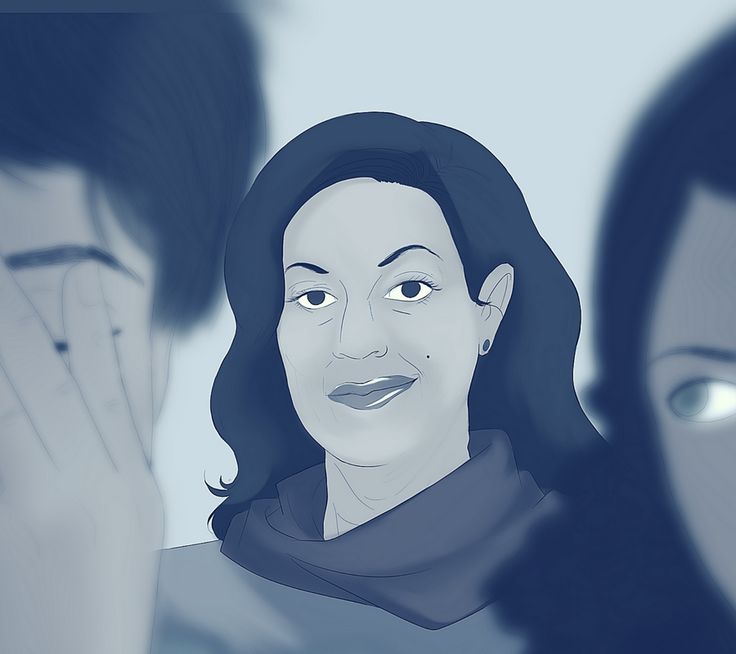 Their needs and wants are catered for by the mother, which instils in them high self-esteem and confidence. It also offers the child the freedom to act independently of the mother without fear of losing her love.
Their needs and wants are catered for by the mother, which instils in them high self-esteem and confidence. It also offers the child the freedom to act independently of the mother without fear of losing her love.
With a narcissistic mother, she only becomes the good mother when the child is behaving as she expects. If the child exhibits negative emotion, acts out or defies the narcissistic mother, then she reverts to the bad mother by unleashing her rage, shaming the child, or turning her back on them. The consequences of losing the good mother are devastating. Remember that to the child, abandonment equals death. Therefore, the child quickly learns that if they want the good mother, they need to behave as the narcissistic mother expects. The child temporarily resolves the split by being obedient.
This dynamic becomes ingrained in the child’s being. The narcissistic mother holds the child hostage by threatening their lifeline. As they grow into an adult, the child loses awareness of this fact completely. Meanwhile, the narcissistic mother remains unpredictable, selfish, manipulative, controlling and abusive. Holding onto the good mother is difficult and frustrating work, and often crazy-making. The core of the problem is that the child cannot let go of their desperate longing for the good mother. They have no awareness of her existence in their mind, and no way to prove that she does not exist. They live with an overwhelming impulse that tells them to cling desperately to her.
Meanwhile, the narcissistic mother remains unpredictable, selfish, manipulative, controlling and abusive. Holding onto the good mother is difficult and frustrating work, and often crazy-making. The core of the problem is that the child cannot let go of their desperate longing for the good mother. They have no awareness of her existence in their mind, and no way to prove that she does not exist. They live with an overwhelming impulse that tells them to cling desperately to her.
If the child loses faith in the narcissistic mother, she will sense their withdrawal. She reacts by suddenly becoming attuned and caring, or she guilt trips them by accusing them of ‘abandoning’ her. The child will again project the good mother and then unwittingly re-enter the narcissistic mother’s game, after which she can resume her control of the child. To hate the bad mother induces guilt and shame on the child, so they must work especially hard to bring the good mother out of their narcissistic parent. They worship and idolise the narcissistic mother in the hope that they can bring out the mother they so desperately need. This use of ‘Stockholm Syndrome’ by the narcissistic mother can keep the adult trapped for a lifetime and permanently hijack their chances of healing.
They worship and idolise the narcissistic mother in the hope that they can bring out the mother they so desperately need. This use of ‘Stockholm Syndrome’ by the narcissistic mother can keep the adult trapped for a lifetime and permanently hijack their chances of healing.
The nail in the coffin is that the narcissistic mother will never be the attuned, loving person the child is frantically searching for. The child either has to put up and shut up, or suffer the consequences; i.e. overwhelming shame and guilt. After a certain amount of time, the child usually becomes exactly what the narcissistic mother wants them to be, and order is achieved. Yet deep inside, the child is lonely, frustrated and in despair because they are not being heard, understood and loved. They are merely playing the role of the good child, hoping to gain the love they crave.
A new hope for healing from the narcissistic mother
Healing from a narcissistic mother comes when the child can begin to see the dysfunction at play. Seeing it, however, will not fix it. The power of the good mother is irresistible and undeniable. For the child to escape the dysfunction of their relationship with the narcissistic mother, they need to embrace the idea of the good mother and surrender to it: through another person.
Seeing it, however, will not fix it. The power of the good mother is irresistible and undeniable. For the child to escape the dysfunction of their relationship with the narcissistic mother, they need to embrace the idea of the good mother and surrender to it: through another person.
The path to healing remains through the good mother, but the adult must replace the figure who represents her. The narcissistic mother will never offer the attuned love and empathy which the adult’s inner child requires. The adult will need to find a female therapist and lay their trust and faith in her. The adult will consciously be aware of what they are attempting, but must allow their inner child to bond with the new mother figure at its own pace.
Eventually, if the therapist is selfless and attuned enough, the adult will be able to slowly drop their guard and allow themselves to be infantilised. As the therapist offers sufficient empathy and understanding for the adult, the adult’s child will re-experience their trauma in a safe environment and begin healing.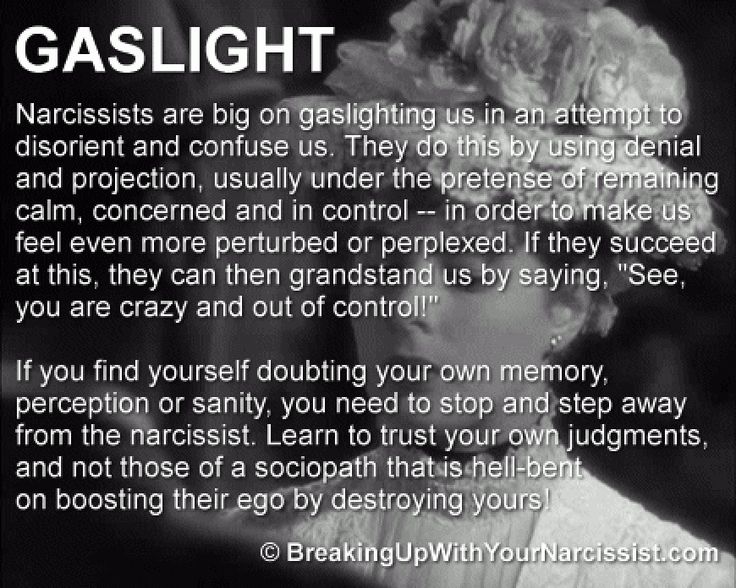 The therapist will have their own flaws and issues, but will leave them out of the therapist’s office to ensure that the adult can sufficiently reproduce the good mother projection unhindered.
The therapist will have their own flaws and issues, but will leave them out of the therapist’s office to ensure that the adult can sufficiently reproduce the good mother projection unhindered.
Over time, the adult will consistently and truly experience the good mother, and then begin to grieve the fact that they will never find her in their narcissistic mother. They will come to see and experience the truth: the mother they crave does not exist. She is a construct in their mind which they have grasped onto their entire life. In order to mature, every single person must experience the good mother sufficiently and then finally let her go. It is a rite of passage which we all need — without the sudden disruption from the bad mother.
The mortal woman
A person cannot know of the good mother and then instantly let her go. The adult must experience her. It is also crucial that they experience her on their own terms. In the therapist’s office, the adult must be uncensored and unbound by shame. They require a state of complete vulnerability; like a child. They must expose their deepest being to the therapist, and allow the therapist to connect with it and accept it. With the therapist’s support, the adult can experience and then slowly grieve the good mother. The glasses slowly dissolve and the adult begins to see their therapist as a human being: a woman with admirable qualities but also with flaws and ‘bad’ elements.
They require a state of complete vulnerability; like a child. They must expose their deepest being to the therapist, and allow the therapist to connect with it and accept it. With the therapist’s support, the adult can experience and then slowly grieve the good mother. The glasses slowly dissolve and the adult begins to see their therapist as a human being: a woman with admirable qualities but also with flaws and ‘bad’ elements.
Most importantly, the adult will learn to see their own mother more clearly; as a deeply wounded person who is playing a dangerous game. It is the game itself which becomes most clear to the adult, and they stop taking the bait. Guilt and shame lose their power. At some point, the child inside comes to life and the adult experiences peace and joy they did not know existed. They begin to heal and bask in the warmth of life, unhindered by the shadow of the narcissistic mother.
To better understand the dynamics of narcissistic abuse while healing from a narcissistic mother, check out How To Kill A Narcissist.
The Narcissistic Family Explained - How To Kill A Narcissist
The reasons for family dysfunction vary significantly. A lot of the time, the parent is an alcoholic or is drug addicted. These dysfunctions are easy to spot. One covert cause of family dysfunction which is harder to see is narcissism, which lies at the core of the narcissistic family.
In a healthy family, the parents are emotionally self-assured and live balanced, dynamic lives. They have a network of support around them, and their choice to have children came naturally. Consequently, they are equipped to nurture their children and to support their children’s growth until the children are ready to differentiate and gain their autonomy. Healthy parents are empathic enough that their children feel secure in their attachment, and they have enough healthy shame that the children grow up with high self-esteem. Healthy parents rely on honest communication to establish order in the house, not an authoritarian rule.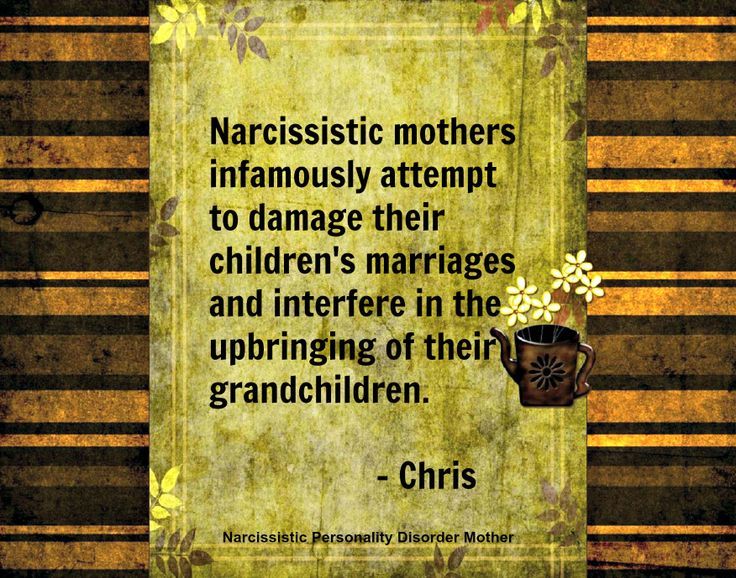
In a narcissistic family, on the other hand, the parents have long lost touch with their true self and are living through a narcissistic false self. For the narcissistic parent, the family represents two things; a status symbol, and an entity which they have at their disposal. What should be a nurturing and loving structure intended to raise healthy children, instead becomes a source of narcissistic supply. In such a family, the needs of the narcissist outweigh those of everyone else, and the spouse and children must serve the narcissistic parent. The narcissist’s unquenchable thirst for control and narcissistic supply lies neatly under the guise of a loving family. Yet the narcissist will relish their position of power.
For this structure to function, the following guidelines must be adhered to:
- The needs of the narcissist come first and foremost
- The needs of the children or spouse must never limit the narcissist, or threaten the image or reputation of the family
Rather than plan how to best nurture and raise their children into independent adults, the narcissist will ponder what role each person can play in bolstering their own grandiose image. This results in the creation of a hierarchy and a shuffling/suppressing of needs that ensures the family gains a dysfunctional balance which satisfies the narcissist. Anything that threatens that balance or threatens the narcissist must be crushed without exception.
This results in the creation of a hierarchy and a shuffling/suppressing of needs that ensures the family gains a dysfunctional balance which satisfies the narcissist. Anything that threatens that balance or threatens the narcissist must be crushed without exception.
The narcissistic family image
Each person’s role will depend on two things; what kind of grandiose image the narcissist is attempting to maintain, and what the family member can offer.
This ‘image’ or rather ‘doctrine’ of a narcissistic family is usually disguised beneath the following:
Image of a happy family
Fundamentally, the happy family is an image the narcissist needs to bolster their reputation in public, which means the children must be perfectly well-behaved at all times. Because the narcissist is not in touch with their emotions, they make no attempt to fulfil the emotional needs of the children but will still expect this image to be upheld. Resentment and dissatisfaction are not tolerated.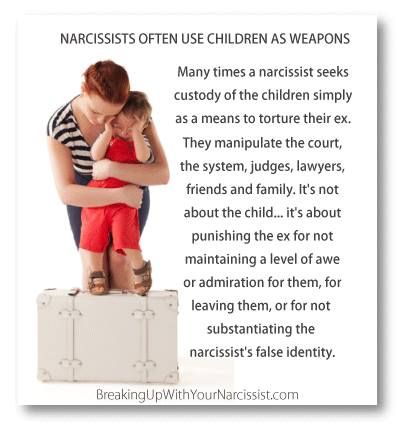
Image of success
The narcissist values success, so the children will be expected to succeed in everything they do. In a covert narcissistic family, this expectation exists even though the parents make no attempt to teach their children and lead the way. The children are left to fulfil the expectations of a parent who is only obsessed with their own false image. In the overt narcissistic family, the narcissistic parent will lead the way and expect the child to keep up and exceed their expectations. Anything less than 100% is a failure.
Whether you receive acceptance and approval depends strictly on your ability to serve the narcissistic ideology of the family. You will be measured on the following:
What role you can playIf you can play a role that serves the ideology of the family, then you will be valued, and consequently receive acceptance and approval. For example, a family may value first born boys, so being born a boy and first will instantly win you points. A family may value education as a pathway to success, so receiving high grades becomes a source of acceptance and approval. Simply being the well-behaved child and not causing any inconvenience for the narcissist can also win points, where if the child is being quiet and not causing trouble, they are labelled a ‘good boy’ or ‘good girl’. The youngest child can win points just for being the youngest.
A family may value education as a pathway to success, so receiving high grades becomes a source of acceptance and approval. Simply being the well-behaved child and not causing any inconvenience for the narcissist can also win points, where if the child is being quiet and not causing trouble, they are labelled a ‘good boy’ or ‘good girl’. The youngest child can win points just for being the youngest.
If you represent your family enthusiastically in public, you will be given points. By appearing happy in front of others, it reinforces the family’s reputation and helps conceal the narcissist’s real agenda as well as the family’s misery.
Any member who is unable or refuses to reinforce the narcissistic ideology of the family will be punished through being ignored, verbally or physically attacked and ridiculed. Being valued for some things but discarded and attacked for other things creates a lot of anxiety and tension for the child, who only wants the love and acceptance of their parents, but has no clear idea of what it takes. They are completely unaware of the narcissistic agenda of the parent, or that they are a pawn in a game. For the child, everything is a matter of the heart. For the narcissist, everything is a matter of their narcissistic image.
They are completely unaware of the narcissistic agenda of the parent, or that they are a pawn in a game. For the child, everything is a matter of the heart. For the narcissist, everything is a matter of their narcissistic image.
Roles of a narcissistic family
This narcissistic ‘drama’ is like a stage show, and each person plays their part. Typical roles of a narcissistic family are as follows:
EnablerThis is usually the spouse or one of the daughters. The enabler tends to the basic needs of the narcissist and helps put on a happy front. The enabler also makes excuses for the narcissist. Ultimately, the enabler wants the narcissist’s approval and acceptance, which they only have a chance of getting if they play nice. When the enabler is not actively helping the narcissist, they are expected to orbit and remain by their side. This helps the narcissist maintain a feeling of grandiosity and control.
Golden childThe narcissist will seek out a child to mould in their own image. This is usually the oldest child but can be the second. It depends on talent, attractiveness, ability, intelligence and what kind of agenda the narcissist has. For example, if a narcissist values image the most, and their first born is awkward and unattractive, they will designate the second born as the golden child. The golden child grows up believing they are special when in fact, they have simply been groomed in the narcissist’s image. The golden child will believe that they are better than the other siblings and may try to boss them around.
This is usually the oldest child but can be the second. It depends on talent, attractiveness, ability, intelligence and what kind of agenda the narcissist has. For example, if a narcissist values image the most, and their first born is awkward and unattractive, they will designate the second born as the golden child. The golden child grows up believing they are special when in fact, they have simply been groomed in the narcissist’s image. The golden child will believe that they are better than the other siblings and may try to boss them around.
Surrogate parent
The narcissist is usually too preoccupied with themselves to cater to the needs of the children, and their enabling spouse is usually too preoccupied with the demands of the narcissist. When there are multiple children in the family, the narcissist will designate one child to play surrogate parent. This child-adult will be expected to cater to their younger siblings needs and will be held accountable for their sibling’s well-being and behaviour. To fill this role, the surrogate parent will have to suppress their emotions, growing up to be overly disciplined and rigid.
To fill this role, the surrogate parent will have to suppress their emotions, growing up to be overly disciplined and rigid.
The narcissist will need somebody to dump their frustration and disowned rage on. The second oldest or the most outspoken child will be designated as the ‘problem’ child and be put down severely at any chance. Other children in the family may follow the narcissist’s lead and unwittingly dump their rage and shame on the scapegoat.
Lost childAny children who have not been designated the role of golden child, surrogate parent or scapegoat will be neglected and encouraged not to rock the boat. They grow up with a sense of not knowing who they are or how they fit in the world, as well as a burning feeling of shame and inferiority.
MascotUsually the youngest. They are the joker of the family, providing comedy relief that masks the dysfunction of the family.
The roles can shift and vary. For example, if the oldest moves out or plays up, then the second oldest may be promoted to golden child.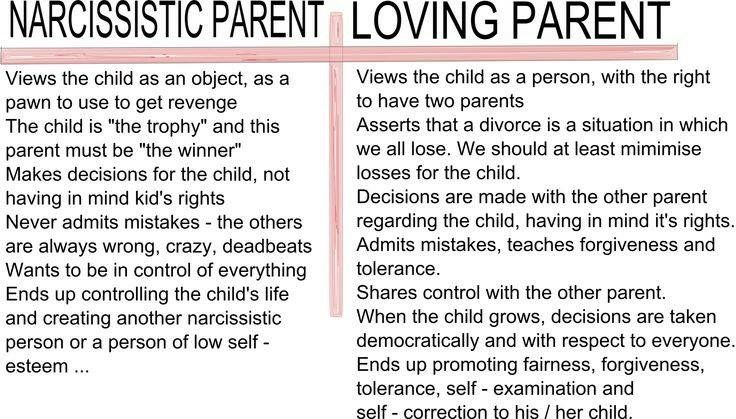 Also, a child may play multiple roles. The golden child can play surrogate parent, and the lost child can also play mascot. An only child is especially prone to multiple roles since they have no siblings. They will more often than not be designated the golden child, but also play scapegoat when the narcissist needs it and be expected to play the mascot to distract the parents and provide comedy relief. It’s quite crazy making for the child.
Also, a child may play multiple roles. The golden child can play surrogate parent, and the lost child can also play mascot. An only child is especially prone to multiple roles since they have no siblings. They will more often than not be designated the golden child, but also play scapegoat when the narcissist needs it and be expected to play the mascot to distract the parents and provide comedy relief. It’s quite crazy making for the child.
Consequences of a narcissistic family
By designating roles for each person, the family becomes a cut-throat scramble for survival. Each child is left fighting for scraps of attention and approval from the narcissistic parent. This creates the belief in each child that love is a competition and getting it depends on playing your role. The reality that love is a source of acceptance, nourishment and sharing is completely lost on the children in a narcissistic family. They are living in a dictatorship, cleverly disguised as a ‘happy family’.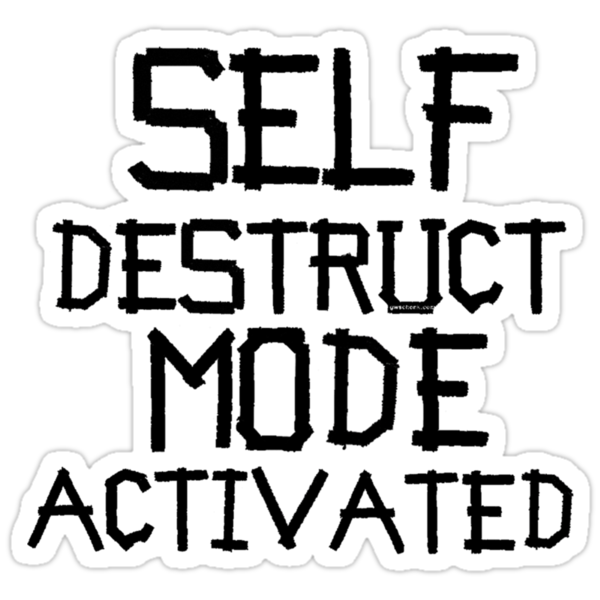
The damage done by being in a narcissistic family is enormous:
Anxiety and depression
The intermittent reinforcement the child receives from the parent is much like gambling. Unable to consciously grasp the narcissist’s agenda, the child feels like they are being rejected and rewarded randomly. This creates a lot of anxiety. For the child, this approval is what gives them a sense of safety and wholeness, and they continue to play the game, remaining addicted, anxious to gain love, falling into depression and shame when they don’t get it, then starting the cycle again.
Emotional suppression
The emotional needs of the family member must be suppressed so as not to affect the fragile balance of the narcissistic family. This is painful and stunts the ability of the child to thrive and love others.
Low self-esteem
Unable to ever really get it right, each member of the family develops an inferiority complex. The lost child is left feeling neglected and worthless, and the scapegoat is left full of rage and shame. Each person in a narcissistic family pays a price, albeit in different ways.
Each person in a narcissistic family pays a price, albeit in different ways.
Wrong beliefs about relationships
Each member grows up with the belief that relationships are about which role you play, being in constant competition, as well as love being a limited resource which you must earn through your actions.
Lack of trust
Intimacy is a battlefield for the child of narcissism. The child, who keeps opening up their heart but is rejected without knowing why, eventually stops trusting the parent, and this mistrust pours out into their daily life. The path to love becomes too frustrating, and the adult-child creates roadblocks to intimacy and closeness. This leads to enormous complications in their relationships when they reach adulthood.
The dynamic of the narcissistic family becomes deeply ingrained in the child. As they grow older and leave (or flee) their dysfunctional family, they will unconsciously gravitate to other structures which remind them of their family, playing out their role all over again; only this time in a new environment.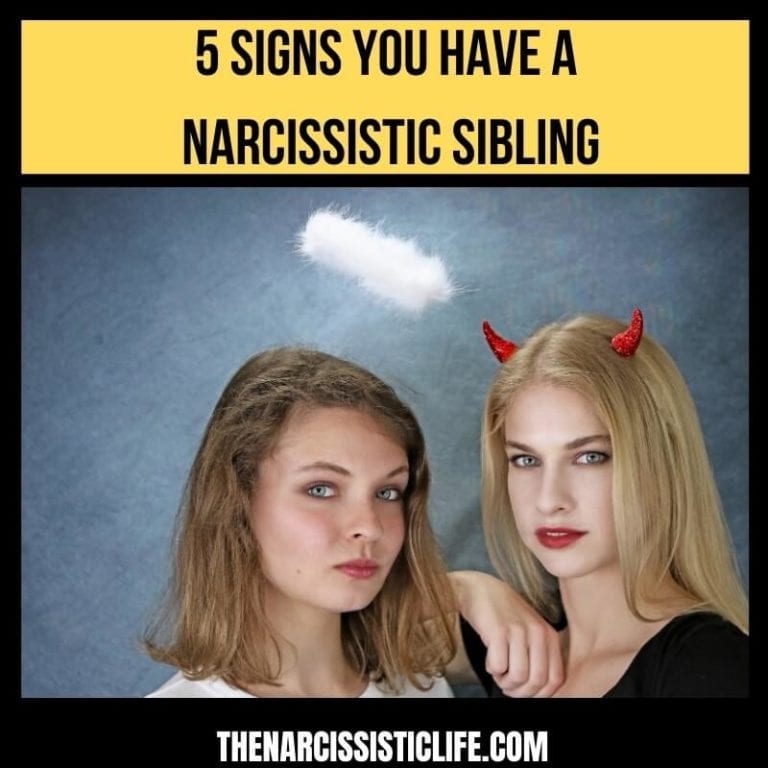 The new structure will be based on the same principles of the narcissistic family.
The new structure will be based on the same principles of the narcissistic family.
This dysfunctional dynamic perpetuates despairingly until the core of narcissism is understood, paradigms are shifted and personal power is pursued. To delve deeper into and heal from the narcissistic family, check out How To Kill A Narcissist.
Daughter and mother: separation is difficult but necessary!
303,320
Man among men
To tell about her painful relationship with her mother, 40-year-old Katerina writes the book “Mom, don't read! Confessions of an "ungrateful" daughter. In it, she lists in detail her childhood and adult attempts to earn maternal love, each time unsuccessful. She does not write for her mother - this is how she tries to get rid of the pain, which "has stretched out for many years and has not subsided so far" ...
Natalia is 36 years old and considers her mother her best friend. “We often call each other, go shopping together, and every weekend I come to her with my children.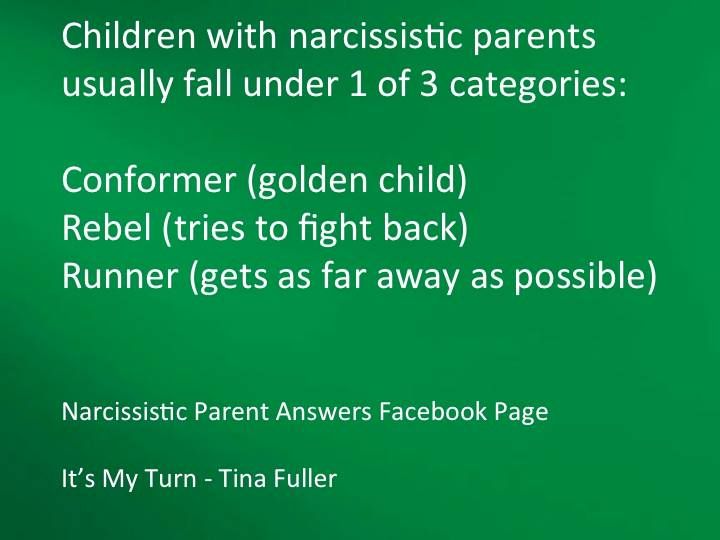 We are very close,” she shares. And after a pause, he admits that the visits are not entirely voluntary. It is worth missing at least one, and she feels guilty. As in her youth, when her mother reproached her for selfishness, constantly reminding her of what she sacrificed in life while raising her “ungrateful daughter”... by forgiving her, nor freed from dependence and guilt. In other words, they never truly matured. Why is it so difficult?
We are very close,” she shares. And after a pause, he admits that the visits are not entirely voluntary. It is worth missing at least one, and she feels guilty. As in her youth, when her mother reproached her for selfishness, constantly reminding her of what she sacrificed in life while raising her “ungrateful daughter”... by forgiving her, nor freed from dependence and guilt. In other words, they never truly matured. Why is it so difficult?
“The relationship between mother and daughter is unique,” says psychotherapist Ekaterina Mikhailova. “They always have guilt and forgiveness, affection and rebellion, incomparable sweetness and incomparable pain, the inevitable similarity and its furious denial, the first and main experience of our “together” - and the first attempt to still be separately...
Competition. Struggle. Fear. A piercing need for attention, for approval. Horror before the power of this need. Love, sometimes manifesting itself in murderous, suffocating forms.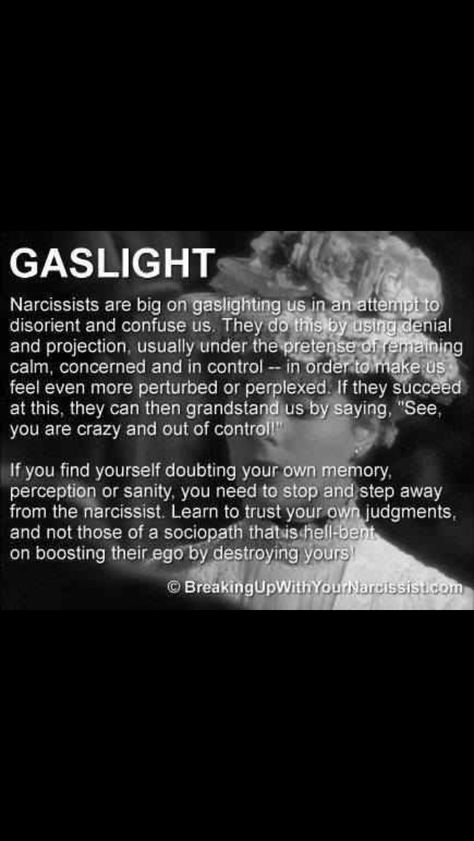 The first experience of submission to power, "superior enemy forces" - and the very first experience of one's power over another person. Jealousy. Unspoken grievances. Expressed grievances. And above all this is the uniqueness of these relations. The other one won't."
The first experience of submission to power, "superior enemy forces" - and the very first experience of one's power over another person. Jealousy. Unspoken grievances. Expressed grievances. And above all this is the uniqueness of these relations. The other one won't."
Merge in order to separate later
In early childhood, almost complete merging with the mother is necessary for the child in order to survive. “The sense of security that arises from such a symbiosis helps him grow, mature and gradually begin an independent life,” says psychoanalyst Elina Zimina. “But if there was no such closeness, the desire to merge with the mother, to feel her unconditional love, may remain the most important, the main one.”
That is why so many adults look at the world through their mother's eyes, act as she would have done, hope for her approval and appreciation.
For a girl, a mother is a perfect omnipotent being of the same sex as her. It is later, from about three to six years old, that she begins to compete with her for her father's love. It is easier for girls to distance themselves from their mother compared to boys, for whom the mother becomes the “object of love”. But if this does not happen, the merger can turn into dependence: they see only similarities in each other, but do not notice differences.
It is easier for girls to distance themselves from their mother compared to boys, for whom the mother becomes the “object of love”. But if this does not happen, the merger can turn into dependence: they see only similarities in each other, but do not notice differences.
An adult who continues to struggle with his parents most likely never separated from them
Staying in a close relationship with her mother, the girl stops growing up, because she does not feel like a separate person. And only by moving away, you can find differences: “how am I different from her?”, “What am I?”, “Who am I as a woman?”. By holding her daughter near her, the mother prevents her from finding answers to these questions.
“Gradual separation, separation from parents, creates within us the mental space necessary to feel our own characteristics and desires, including our femininity,” explains Elina Zimina. “It is the ability to distinguish between what belongs to me and what belongs to another.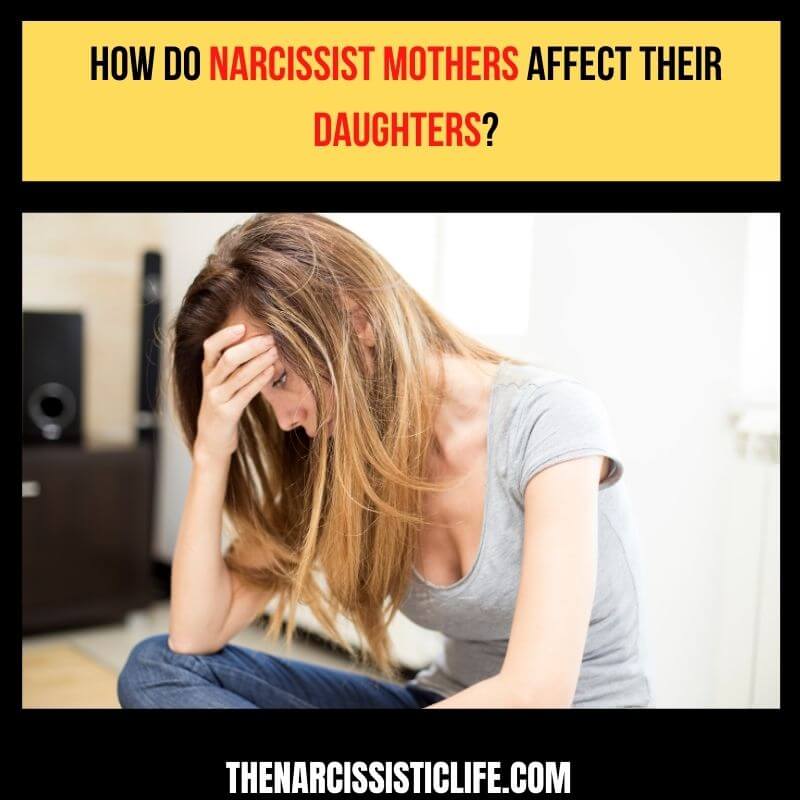 ”
”
You can compare yourself with someone who is on equal or almost equal positions with us. However, for a child, a mother is a creature devoid of flaws. To see a real woman in her, you have to overthrow her from an imaginary pedestal. It is enough to recall the intensity of passions between adolescents and parents to understand how painful this deidealization is.
“When a teenager sees real people in his parents, the degree of hostility usually decreases,” says the psychoanalyst. “And an adult who continues to fight with his parents most likely never separated from them.”
But the separation does not end there either, and a girl who becomes a woman, a mother, has to establish a new distance with her own mother every time.
The third is not superfluous
Contradictions and conflicts, overt or hidden, are always present in the relationship between mother and daughter. “A mother can painfully experience the loss of her daughter’s unconditional love when, in the oedipal phase of development, she transfers her love to her father,” explains Elina Zimina. - Unlike girls, a boy at this age continues to love his mother. Therefore, in the relationship of mothers with sons, there are fewer conflicts and more harmony. And in the relationship of mother and daughter, there can be more conflicting feelings: in addition to love, they contain jealousy, envy and rivalry.
- Unlike girls, a boy at this age continues to love his mother. Therefore, in the relationship of mothers with sons, there are fewer conflicts and more harmony. And in the relationship of mother and daughter, there can be more conflicting feelings: in addition to love, they contain jealousy, envy and rivalry.
Both poles of maternal love are equally dangerous for a daughter: her lack and excess
In this connection, the image of that little girl who once was her mother clearly shines through. This image brings her back to memories of her own childhood, her relationship with her own mother, the experience of love and pain.
Both poles of maternal love, its deficiency and excess, are equally dangerous for a daughter. But the relationship of mother and daughter is not a relationship of two, but always of three people. “The father separates them and tells his daughter: “I am your mother’s husband and lover,” explains Elina Zimina. “At the same time, he supports his daughter, admiring her femininity, and makes it clear that later she will meet a man who will give her the desired love.”
“At the same time, he supports his daughter, admiring her femininity, and makes it clear that later she will meet a man who will give her the desired love.”
The third person who helps mother and daughter separate from each other may not be only the father or the mother's partner. An idea, a passion, a job is something that can completely capture a woman’s thoughts so that for this time she forgets about the child, feels “separated” from him.
Of course, a psychotherapist can also play this role. “With one“ but ”, which is often not taken into account in dreams and plans,” Ekaterina Mikhailova insists. “Any third person is a temporary figure: having fulfilled his role, he must fade into the background, making room for the development of relations.”
Far and near
Where is the boundary between a good, trusting relationship and complete dependence on the wishes and moods of the mother? It is not always easy to find the answer to this question. Especially now, when a friendly relationship with the mother ("mother-girlfriend") is becoming the ideal of many women.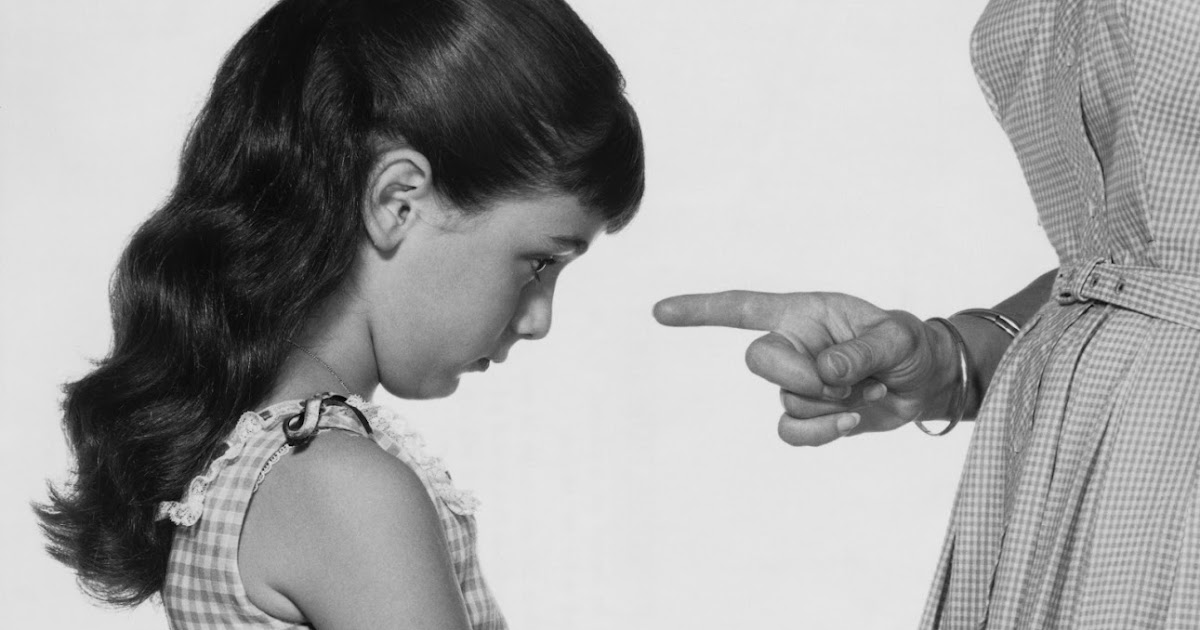 But often they hide the lack of distance, the very “uncut umbilical cord”.
But often they hide the lack of distance, the very “uncut umbilical cord”.
Daily calls, requests for advice, intimate details - this is how it looks in life. But constant conflicts, and even a gap between mother and daughter, do not mean that there is no emotional connection between them. Distance is also not an indicator. “A daughter can be extremely dependent on her mother, despite the fact that they are separated by thousands of kilometers, or live with her in the same house and be independent,” says Elina Zimina.
A woman's natural desire to become independent can be hindered by her mother's desire to keep her close to her, often unconsciously. “Sometimes she perceives the separation of the child as evidence that he no longer loves her and leaves her - perhaps this is due to her own experience of sudden separation,” Elina Zimina gives an example. - She may not be sure of her own femininity and be jealous of her daughter's beauty. Or consider himself entitled to manage her life, because he sees his continuation in it. A single woman can look for a “substitute” husband or her own mother in a child.
A single woman can look for a “substitute” husband or her own mother in a child.
If parents allow their children to be free, but are ready to support if necessary, then the separation will take place peacefully
In response, the daughter manifests anxiety - fear of losing her mother's love, self-doubt, fear of men ... Some mothers want to keep their daughter at any cost, others, on the contrary, they strive to “get rid of” it as quickly as possible. At the first teenage attempts to declare independence, they say: “well, you are completely free and independent, you can live as you want.”
But behind this lies rejection. “Adult children also need support,” says Elina Zimina. “And if parents allow them to be free, but are ready to support if necessary, then the separation is likely to pass peacefully and good relations will continue.”
The path to freedom
True independence comes when a woman critically evaluates her mother's attitudes, behaviors, and life scenarios. It is impossible to completely abandon them, because in this way she will be isolated from her own femininity. But to accept them entirely means that she, having remained a copy of her mother, will never become herself.
It is impossible to completely abandon them, because in this way she will be isolated from her own femininity. But to accept them entirely means that she, having remained a copy of her mother, will never become herself.
“Usually, those who manage to unilaterally “withdraw claims” and stop nourishing painful relationships with their hopes, grievances, or playing the role of an ideal mother or daughter, usually manage to move towards a seemingly desired, but still not advancing independence,” says Ekaterina Mikhailova . Too close relationship is mutual. Often it just seems that “mom won’t let go” - both are not ready to move into a new phase of the relationship, but the responsibility for this is usually assigned to the older one.
If we really want changes, we need to start with a few tough questions to ourselves, Ekaterina Mikhailova advises: “What am I hiding from myself, explaining all the problems of my life with pressure, influence, interference and the need to take care of one or the other? Maybe it's me who fills the emotional void with the game of fighting for independence?
Maybe the world behind me scares me so much that it's easier for me to stay in a strange mixture of duel, dance and embrace with that other woman? What do I hope for, continuing to sort things out, reconcile, quarrel, reproach - or pamper and please? Maybe, in the depths of my soul, I still believe that it will be possible to prove something, that “she” will agree, accept, approve . .. "
.. "
How do we know if we have really managed to become independent and have broken the mother's umbilical cord? This is so if we are no longer torn apart by conflicting feelings, no longer tormented by internal conflicts. If we ourselves regulate the degree of trust and distance in relations with the mother, without feeling guilty. We can objectively assess what we are similar and what are different from each other. And finally, if we feel that we are connected with the mother in certain bonds, but not tightly attached to her.
As adults, we begin to build relationships with mothers in a new way. However, with some of them, this is especially difficult to do. Psychologist Susan Cohen and journalist Edward Cohen list 10 common types.
- Narcissistic . She dreams of seeing in her daughter a pretty doll who would think only of her mother.
- Supervisory . She has a rule for every occasion. And every time she tells her daughter that she did not fulfill it.

- Opinion dependent . He worries about what the neighbors will think - even when his daughter has long grown up and left the city.
- Seductive . Always dressed in fashion, too short, too tight. She flirts with any man she meets, including her daughter's friends.
- Choke . Helps even when the kids don't need it.
- Borderless . Takes the successes and failures of his child very close, too close to his heart...
- Critical . Reproaches everything that the daughter (not) does, as well as what she dreams about.
- Closing eyes . Thinks things aren't going so badly, even when things can't get any worse.
- Omniscient . She had long ago done everything that her daughter hoped to do someday, and much better than she did.
- Accusing . Always dissatisfied, but waiting for the children to put their lives in order to satisfy her desires and dreams.
Text: Anna Fateeva Photo Source: Getty Images
New on the site
How to determine the type of attachment - just read the words of your favorite songs
“I told my husband that he does not earn much.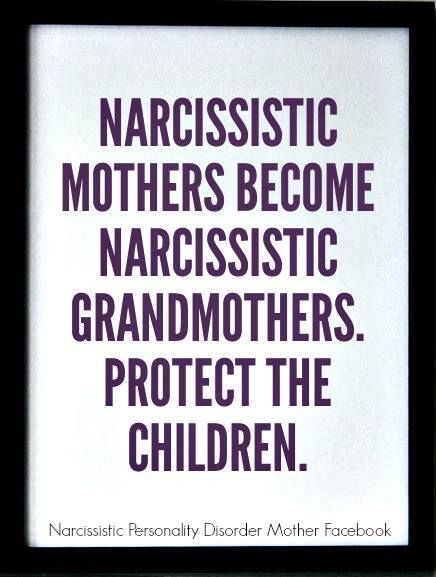 He was offended”
He was offended”
Worst day of the week: sociologists found out when Russians feel unhappy
“He died in the line of military duty”. How to live after the loss of a loved one
How to deal with toxic colleagues: 5 rules of conduct
“I want to cry as soon as I hear “Tired toys are sleeping”: what is the reason for such a reaction?”
“My father annoys me with his anxiety”
Justify or deny: behavioral strategies of mothers of murderers - 6 real-life examples Belokovylskaya
I am 39, and I hardly communicate with my mother - she learns about my life from social networks. From the phrase "I love you" from her lips, I cringe, and when I see small children, I experience negative emotions. Probably, in the depths of my soul, I envy them: they get what I didn’t have. I did not feel her love and support. She didn’t go to my school concerts, she never praised me, and all the time she compared me with others: “Here’s Lena, well done, but you’re stupid.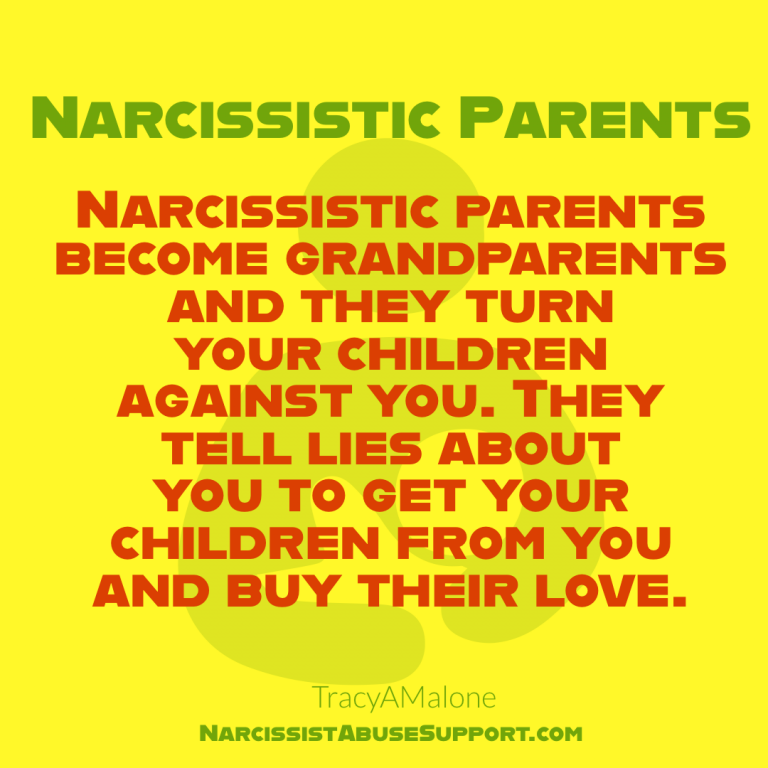 ” When she saw that these words hurt me, she accused me of being too vulnerable and not being able to take criticism. I was bad no matter what I did. Once I recorded a cassette for her with my songs. She said that I had no voice and that I was doing complete nonsense. Since then, I don't like my voice. Now I am learning to accept it, to express myself through it. I go to the vocal studio to find it again. I was so desperate to get her attention that I cut my veins. I wanted to show her that I am alive, I exist. This story of Marina N. (not her real name), who is currently undergoing psychotherapy to deal with the consequences of a traumatic relationship with her mother, is far from an isolated case. Peg Streep, the best-selling author of The Unloved Daughter, whose posts on PsychologyToday.com have been read by more than 14 million people, says that every day she receives hundreds of letters from different women who, brought up in full-fledged families, did not feel motherly love. Some of them are 60-70 years old, and they are still unhappy, despite a successful career and their own family.
” When she saw that these words hurt me, she accused me of being too vulnerable and not being able to take criticism. I was bad no matter what I did. Once I recorded a cassette for her with my songs. She said that I had no voice and that I was doing complete nonsense. Since then, I don't like my voice. Now I am learning to accept it, to express myself through it. I go to the vocal studio to find it again. I was so desperate to get her attention that I cut my veins. I wanted to show her that I am alive, I exist. This story of Marina N. (not her real name), who is currently undergoing psychotherapy to deal with the consequences of a traumatic relationship with her mother, is far from an isolated case. Peg Streep, the best-selling author of The Unloved Daughter, whose posts on PsychologyToday.com have been read by more than 14 million people, says that every day she receives hundreds of letters from different women who, brought up in full-fledged families, did not feel motherly love. Some of them are 60-70 years old, and they are still unhappy, despite a successful career and their own family.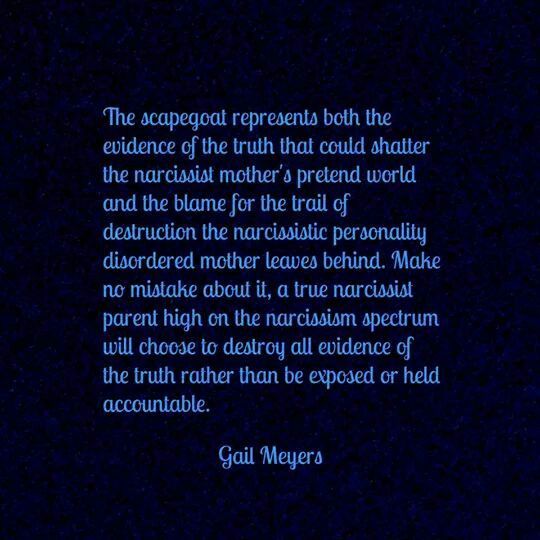 Many have gone through depression, eating disorders and addictions.
Many have gone through depression, eating disorders and addictions.
“People desperately want to believe that in a world where love is hard to find and even harder to keep, there is something unshakable—a mother's love,” says Streep. “The cruel truth that there are mothers who hurt, reject or humiliate their children with words and actions remains taboo in our culture, no one wants to admit it. We suffer from loneliness and silence, we drown in sentimental syrup, in a sea of T-shirts and cups with the inscriptions "Home is where mom is" and "The best mom in the world." The feeling of isolation - the abyss that separates from loved ones, the stigma of being flawed and unworthy, the fear that something is wrong with you - grows stronger every day and hurts no less than the absence of love.
One of the factors influencing the distorted perception of reality by daughters who have been subjected to maternal abuse is social convention. The classic situation is when an adult daughter begins to feel guilty about the fact that her relationship with her mother did not work out, because she is getting old and needs help. “In our society, it’s common to be reminded of filial duty,” Streep continues. “All of us have absorbed the idea that we owe a lot to our parents and that even a toxic attitude on their part must be forgiven.” Dependence on maternal emotions is embedded in us by evolution, the driving mechanism of which, as you know, is the struggle for survival. Until a little person has learned to be independent, one can survive only by unmistakably recognizing maternal signals. An interesting experiment on this topic was put by the famous scientist, professor at Cornell University Eleanor Gibson. Its essence boiled down to the following: a one-year-old child was placed on a transparent plexiglass table, one half of which was covered with a tablecloth, and the other half remained free, creating the illusion of an abyss. The mother of the child, standing at the "cliff", was supposed to broadcast different emotions to him. When she smiled, making it clear that everything was fine, the baby crawled towards the “mortal danger” without hesitation, and when she made an angry face, she backed away in fear.
“In our society, it’s common to be reminded of filial duty,” Streep continues. “All of us have absorbed the idea that we owe a lot to our parents and that even a toxic attitude on their part must be forgiven.” Dependence on maternal emotions is embedded in us by evolution, the driving mechanism of which, as you know, is the struggle for survival. Until a little person has learned to be independent, one can survive only by unmistakably recognizing maternal signals. An interesting experiment on this topic was put by the famous scientist, professor at Cornell University Eleanor Gibson. Its essence boiled down to the following: a one-year-old child was placed on a transparent plexiglass table, one half of which was covered with a tablecloth, and the other half remained free, creating the illusion of an abyss. The mother of the child, standing at the "cliff", was supposed to broadcast different emotions to him. When she smiled, making it clear that everything was fine, the baby crawled towards the “mortal danger” without hesitation, and when she made an angry face, she backed away in fear.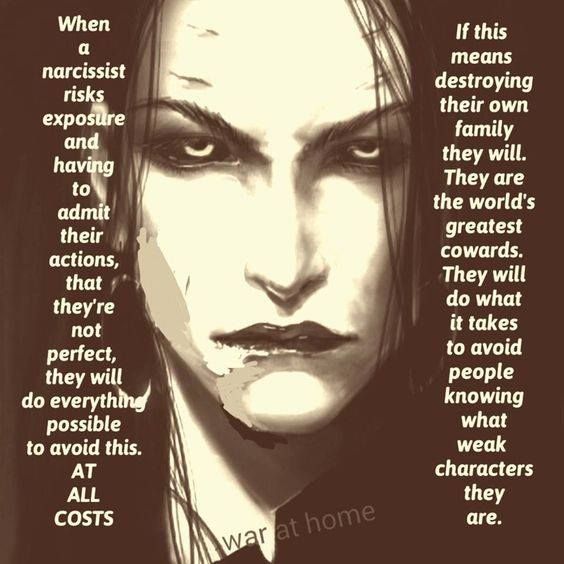 Trust in the mother in infants is unconditional and lies in the plane of the unconscious. The American psychoanalyst Eric Erickson, thanks to whom the theory of identity crisis appeared in science, identifies eight stages of the life cycle and says that each person makes an important choice. At the earliest, you need to choose between basic trust and distrust. And here the key factor is the consistency and uniformity of experience. Inconsistency and unpredictability - in our case, in the behavior of the mother - instill a sense of anxiety and insecurity. Maternal emotions - the only true signal that you need to be able to recognize - suggest how to act in a given situation. These emotions have great power and take precedence even over the child’s own perception: a baby crawling on a transparent table sees the “chasm” with his own eyes and nevertheless confidently moves towards it.
Trust in the mother in infants is unconditional and lies in the plane of the unconscious. The American psychoanalyst Eric Erickson, thanks to whom the theory of identity crisis appeared in science, identifies eight stages of the life cycle and says that each person makes an important choice. At the earliest, you need to choose between basic trust and distrust. And here the key factor is the consistency and uniformity of experience. Inconsistency and unpredictability - in our case, in the behavior of the mother - instill a sense of anxiety and insecurity. Maternal emotions - the only true signal that you need to be able to recognize - suggest how to act in a given situation. These emotions have great power and take precedence even over the child’s own perception: a baby crawling on a transparent table sees the “chasm” with his own eyes and nevertheless confidently moves towards it.
If the infant recognizes emotional messages, then the already conscious child receives or does not receive verbal confirmations of mother's love. Typical problems faced by women who felt its acute deficiency in childhood are inadequate self-esteem, hypersensitivity, difficulty in setting boundaries, inability to say no, a tendency to please others, accepting other people's attitudes and beliefs, fear of getting into arguments. Christine Ann Lawson, Ph.D., in her book Borderline Personality Disorder Mothers and Their Children, identifies several types of mothers whose unpredictable behavior becomes a source of traumatic events. For example, a homeless mother behaves in such a way as to arouse compassion in those around her. She can find symptoms of all diseases at once, work at a job below her qualifications and constantly remind that life is too difficult and unfair. The recluse mother takes the position of a frightened child in a world full of dangers. It is characterized by possessiveness and excessive control. She avoids companies, preferring loneliness to them, in which one can indulge in painful thoughts. The queen mother is experiencing emotional deprivation.
Typical problems faced by women who felt its acute deficiency in childhood are inadequate self-esteem, hypersensitivity, difficulty in setting boundaries, inability to say no, a tendency to please others, accepting other people's attitudes and beliefs, fear of getting into arguments. Christine Ann Lawson, Ph.D., in her book Borderline Personality Disorder Mothers and Their Children, identifies several types of mothers whose unpredictable behavior becomes a source of traumatic events. For example, a homeless mother behaves in such a way as to arouse compassion in those around her. She can find symptoms of all diseases at once, work at a job below her qualifications and constantly remind that life is too difficult and unfair. The recluse mother takes the position of a frightened child in a world full of dangers. It is characterized by possessiveness and excessive control. She avoids companies, preferring loneliness to them, in which one can indulge in painful thoughts. The queen mother is experiencing emotional deprivation. Because of this, the universe must revolve around it. She believes that she has the right to subjugate children, and knows how to instill fear in them. Everything must always be her will. Unlike the queen, in whose soul there is a gaping emptiness, the witch mother is driven by violent anger. She is cruel and despotic, easily crosses personal boundaries and takes special pleasure in depriving her child of what she wants (Marina N., with whose story this text began, says that in childhood her mother never bought her things that she dreamed of, but defiantly gave her their other children).
Because of this, the universe must revolve around it. She believes that she has the right to subjugate children, and knows how to instill fear in them. Everything must always be her will. Unlike the queen, in whose soul there is a gaping emptiness, the witch mother is driven by violent anger. She is cruel and despotic, easily crosses personal boundaries and takes special pleasure in depriving her child of what she wants (Marina N., with whose story this text began, says that in childhood her mother never bought her things that she dreamed of, but defiantly gave her their other children).
Each type has its own verbal stamps. Homeless children can often hear from their mother something from the series “You don’t care about me at all” or “I’m an empty place for you.” The hermit, in whose emotional state fear plays a leading role, is given the phrases “I feel something terrible will happen”, “Trust no one but me”. The Queen devalues everyone who does not treat her with reverence: "Just look at who you look like", "Who are you to tell me. " Witches use scorched earth tactics: "I'm your mother, and I decide what's best for you", "You will pay for this." All of the above is said to both little girls and grown women who have families of their own. “Children of borderline mothers learn to mortify their true selves. In order to survive, they have to adapt to the emotional needs of an unbalanced parent, explains Kristin Ann Lawson. - The mother regards the separation of the child as a betrayal and punishes him for showing self-confidence. She will resort to any manipulation, just to subordinate him to her needs.
" Witches use scorched earth tactics: "I'm your mother, and I decide what's best for you", "You will pay for this." All of the above is said to both little girls and grown women who have families of their own. “Children of borderline mothers learn to mortify their true selves. In order to survive, they have to adapt to the emotional needs of an unbalanced parent, explains Kristin Ann Lawson. - The mother regards the separation of the child as a betrayal and punishes him for showing self-confidence. She will resort to any manipulation, just to subordinate him to her needs.
In an abusive relationship with a mother, a daughter develops different types of attachments. Attachment theory distinguishes three "pathological" scenarios: anxious, avoidant-rejecting, and anxious-avoidant. Anxiously attached daughters of mothers who from childhood subjected them to harsh criticism and devalued any merits, having matured, see signs of rejection in everything and try to find a foothold.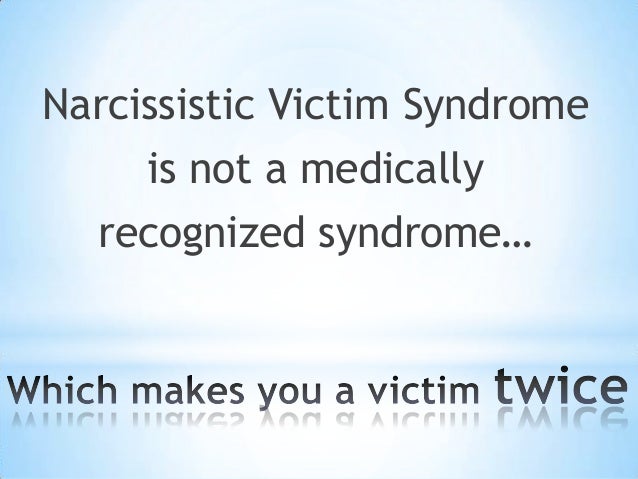 The slightest irony is perceived as an attempt to humiliate, an on-duty request not to be late - as an accusation of lack of punctuality, and a meeting suddenly canceled by a friend - as a betrayal on her part. The anxious-avoidant type, who has learned from an early age that by becoming attached to anyone, you put yourself at risk ("I loved my mother so much, but she did not pay attention to me"), is afraid to enter into close relationships in any form , whether it be a female friendship or a love affair. The avoidant-rejecting person experiences similar emotions, but effectively hides behind armor, declaring publicly that "family and children are for the mediocre, and I need to make a career and conquer the world." All three types have one thing in common: they emerge as a coping mechanism to minimize the suffering of a child whose expectations of parents are not met. And all three greatly interfere with living a full life.
The slightest irony is perceived as an attempt to humiliate, an on-duty request not to be late - as an accusation of lack of punctuality, and a meeting suddenly canceled by a friend - as a betrayal on her part. The anxious-avoidant type, who has learned from an early age that by becoming attached to anyone, you put yourself at risk ("I loved my mother so much, but she did not pay attention to me"), is afraid to enter into close relationships in any form , whether it be a female friendship or a love affair. The avoidant-rejecting person experiences similar emotions, but effectively hides behind armor, declaring publicly that "family and children are for the mediocre, and I need to make a career and conquer the world." All three types have one thing in common: they emerge as a coping mechanism to minimize the suffering of a child whose expectations of parents are not met. And all three greatly interfere with living a full life.
According to Peg Streep, the most difficult thing is to understand exactly what injuries were inflicted.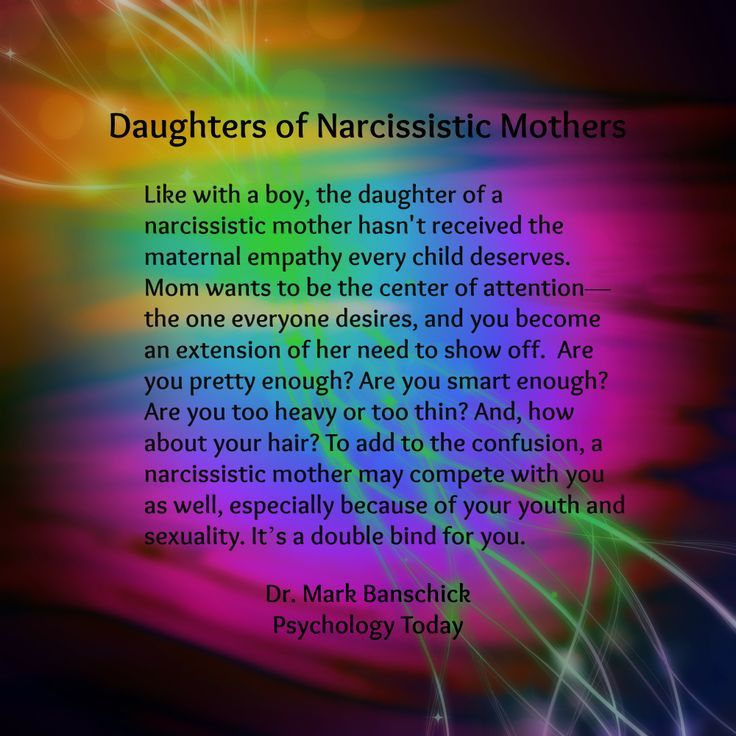 Often maternal attitudes are so closely intertwined with our own judgments that only a psychotherapist can separate them. One way to start a dialogue with yourself about negative childhood experiences is to fill out the ACE (Adverse Childhood Experiences) questionnaire, which can be downloaded from the Internet. Making sense of what happened in childhood is an important step on the path to healing. Peg physiologically calls it detoxification. “First of all, you need to get rid of the habitual idea of \u200b\u200bthe norm,” she explains, “from the burden of stereotypes, from the desperate desire to belong to the family, and even from the hope, waking up one morning, to find that everything was miraculously resolved. Detox will not be easy, but it will reverse the damage that has been done over the years and eventually lead you to liberation.”
Often maternal attitudes are so closely intertwined with our own judgments that only a psychotherapist can separate them. One way to start a dialogue with yourself about negative childhood experiences is to fill out the ACE (Adverse Childhood Experiences) questionnaire, which can be downloaded from the Internet. Making sense of what happened in childhood is an important step on the path to healing. Peg physiologically calls it detoxification. “First of all, you need to get rid of the habitual idea of \u200b\u200bthe norm,” she explains, “from the burden of stereotypes, from the desperate desire to belong to the family, and even from the hope, waking up one morning, to find that everything was miraculously resolved. Detox will not be easy, but it will reverse the damage that has been done over the years and eventually lead you to liberation.”
Marina N. says that during the sessions with the psychoanalyst she experienced great relief and for the first time felt grateful to her mother.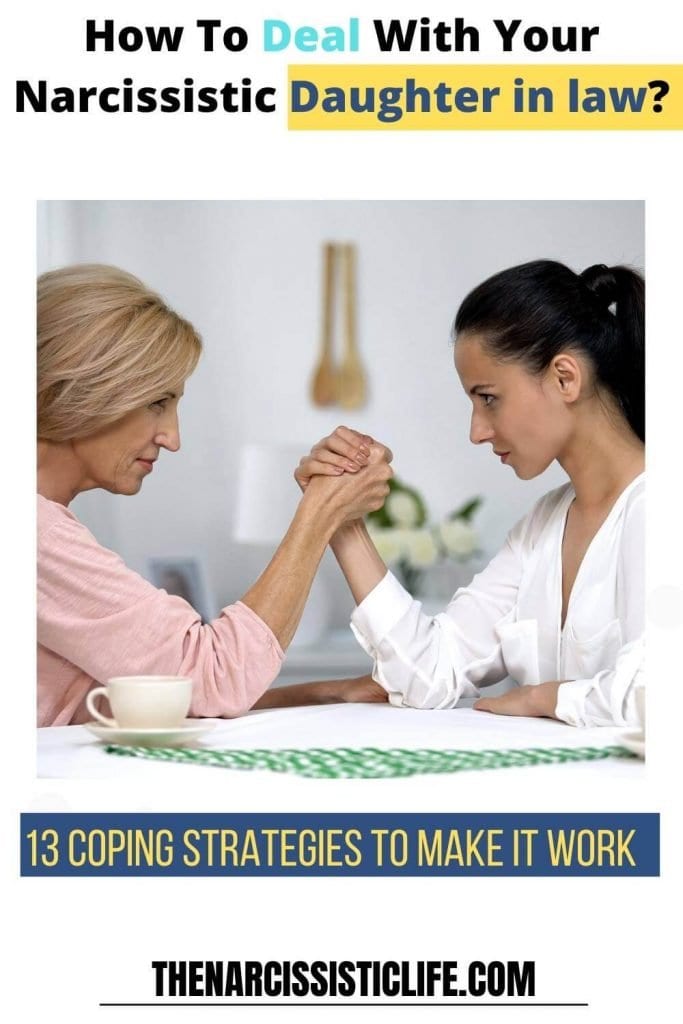 “Perhaps it was her harshness in dealing with me and emotional impenetrability that pushed me to growth. I could break down and hide in a corner, but in the end I became strong and determined, made a career and now I choose how I want to live. I know that our relationship will never be perfect, but today I calmly face this circumstance. When she calls, I will not be hysterical or look for an excuse to avoid an unpleasant conversation. I'll just pick up the phone and tell her, "Hey Mom! How are you?"
“Perhaps it was her harshness in dealing with me and emotional impenetrability that pushed me to growth. I could break down and hide in a corner, but in the end I became strong and determined, made a career and now I choose how I want to live. I know that our relationship will never be perfect, but today I calmly face this circumstance. When she calls, I will not be hysterical or look for an excuse to avoid an unpleasant conversation. I'll just pick up the phone and tell her, "Hey Mom! How are you?"
3 books that will help you understand that your relationship with your mother is toxic and will become a clue what to do about it
- "Toxic Parents" by Susan Forward manipulation: from pressure by authority to instilling a sense of guilt Awareness of manipulation is the first step on the path to liberation. This book is a tool to confront narcissistic parents, and indeed any other narcissistic types. The author sheds light on the complex narcissistic nature and explains how it works.

